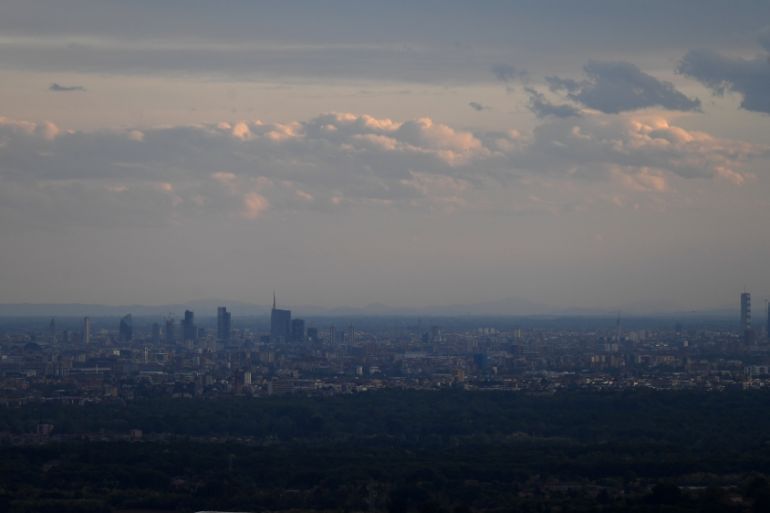Carbon pollution fell 17 percent during coronavirus lockdown peak
Study reveals such low levels not recorded since 2006, but temporary reduction could be just ‘a drop in the ocean’.

The world cut its daily carbon dioxide emissions by 17 percent at the peak of the coronavirus pandemic shutdown last month, a new study has found.
But with life and heat-trapping gas levels inching back towards normal, the brief pollution break will likely be “a drop in the ocean” when it comes to climate change, scientists said in the study released on Tuesday in the Nature Climate Change journal.
Keep reading
list of 3 itemsVirus could cause biggest emissions drop since World War II
Climate change is the world’s biggest risk, says WEF
In their study of carbon dioxide emissions during the pandemic, an international team of scientists calculated that pollution levels were heading back up and, for the year, would end up between four and seven percent lower than 2019 levels.
The figure will be seven percent if the strictest lockdown rules remain all year long across much of the globe, and four percent if they are lifted soon.
That is still the biggest annual drop in carbon emissions since World War II.
For a week in April, the US cut its carbon dioxide levels by about a third.
China, the world’s biggest emitter of heat-trapping gases, sliced its carbon pollution by nearly a quarter in February. India and Europe cut emissions by 26 percent and 27 percent respectively.
The biggest global drop was from April 4 through 9 when the world was spewing 18.7 million fewer tonnes of carbon pollution a day than on New Year’s Day.
Such low global emission levels have not been recorded since 2006.
But by April 30, the world’s carbon pollution levels had grown by 3.3 million tonnes a day from its low point earlier in the month.
Carbon dioxide stays in the air for about a century.

Outside experts praised the study as the most comprehensive yet, saying it shows how much effort was needed to prevent dangerous levels of further global warming.
“That underscores a simple truth: Individual behaviour alone … won’t get us there,” Pennsylvania State University climate scientist Michael Mann, who was not part of the study, said in an email. “We need fundamental structural change.”
If the world could keep up annual emission cuts like this without a pandemic for a couple of decades, there was a decent chance Earth could avoid warming another 1C (1.8F) of warming from now, authors of the study said.
But getting the type of yearly cuts to reach that international goal is unlikely, they said.
The study, carried out by Global Carbon Project, looked at 450 databases showing daily energy use and introduced a measurement scale for pandemic-related societal “confinement” in its estimates.
Nearly half the emission reductions came from less transportation pollution, mostly involving cars and trucks, the authors said.
By contrast, the study found that drastic reductions in air travel only accounted for 10 percent of the overall pollution drop.